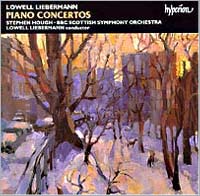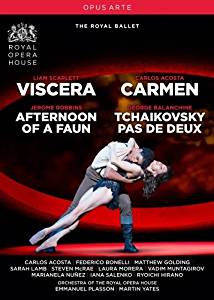Concerto No. 1 for piano and orchestra Op.12 (1983) c.20'00"
(3.3.3.3/4.3.3.1/timp/perc(1)/solo pno/strings)
I. Allegro moderato
II. Larghissimo
III. Allegro con fuoco
Dedicated to Kaikosru Shapurji Sorabji
First performed on October 28th, 1988 at the Drake Theater in Lake Forest, Illinois by Stephen Hough, piano with The Lake Forest Symphony conducted by Paul McRae
ABOUT
Concerto No.1 for Piano and Orchestra Op.12 was composed and orchestrated during the months of August and September of 1983. The work is dedicated to composer Kaikhosru Shapurji Sorabji. It was given its first performance in 1988 by pianist Stephen Hough and the Lake Forest Symphony conducted by Paul McRae.
The Concerto is in three movements; in fact the number three plays a role of great importance in the motivic and structural unity of the work, as is evident from the three tutti octaves and three semitones of the piano theme at the opening of the Concerto. The first movement, Allegro, is energetic and rhythmic. The second, Larghetto, is contemplative and expressive, and orchestrated for strings, clarinets, flutes and timpani only. The final movement, subtitled "Maccaber Dance" (Allegro con fuoco), once again utilizes the full orchestra, and is a fiendishly virtuosic 'perpetuum mobile' for the soloist, whose part is literally without rest for the duration of the movement. The final movement was named after the Scotsman who initiated a "dance of death" during the plague in Mediaeval Paris and from whence comes the derivation of the "Danse Macabre." Some of the thematic material of the Concerto is derived from a medieval song entitled "Fortune My Foe," which occurs in various guises (or disguises) throughout the three movements.
Piano Concerto No. 1 was recorded for the Hyperion label with soloist Stephen Hough and the BBC Scottish Symphony Orchestra conducted by the composer.
RECORDINGS
click on thumbnail to order
DVD and Blu-Ray
REVIEWS
“The First Concerto is an exciting and brilliantly-written tour-de-force for both soloist and orchestra, with an arresting contrast between the angular, opening figure and the eerie Nachtmusik that follows.”
Hi Fi News and Record Review
“…it fully deserved the standing ovation it received.”
Pioneer Press, Lake Forest, Illinois
“…a dark, fast thriller of a score that has the piano skittering through blaring shards of brass and strings.”
The Guardian, UK
“The piano works of American Composer Lowell Liebermann (b.1961) are significant and poetic additions to the keyboard repertoire. One of the most successful composers of his generation, Liebermann is also controversial, especially in “progressive” musical circles. His music is mostly tonal, beautiful, and - unforgivable to some critics and academics - popular and accessible…Liebermann is often categorized as a postmodern tonalist or neoromantic, but such pigeonholing can diminish the distinctive qualities and traits of such an individual composer. His works maintain a strong sense of structural and emotional balance and proportion. The ability to write beautiful, soaring, and memorable melodies attests to his great lyric affinity. Throughout his music, Liebermann makes imaginative use of a rich a varied harmonic and textural palette, and he often demands superior technical ability from his performers. Liebermann’s works for piano are written with a masterly command of idiomatic keyboard writing. He is a formidable pianist who understands (and exploits) the coloristic and virtuoso possibilities of the instrument…Liebermann’s First Piano Concerto, Op.12 (1983), is an extremely successful work and a remarkable acheivement for a twenty-two-year-old composer. Liebermann’s grasp of bravura keyboard writing permeates this showpiece, in which brilliant technical demands mix with varieties of touch and coloristic effects…a technical tour de force.”
William T. Spiller, Notes


